
Makeover Montgomery 5 is a three-day conference with a focus on resilience scheduled for September 2022
Wheaton, MD – The Montgomery County Planning Department, part of The Maryland-National Capital Park and Planning Commission (M-NCPPC), has announced a new April 1 presentation proposal deadline for its conference, Makeover Montgomery 5: Resilient Montgomery, co-sponsored with the University of Maryland’s National Center for Smart Growth. This is the fifth time this conference will take place with a focus on seeking regional ideas to help Montgomery County thrive. This year’s conference will focus on all aspects of planning for resiliency in the areas of the economy, neighborhoods, infrastructure, and the environment. Proposals were previously due by March 15.
Submit a proposal for the Makeover Montgomery 5 Conference
“The COVID-19 pandemic, which has changed the way we work, travel, communicate, and more, has shown us that communities need to be ready for anything,” said Montgomery Planning Director Gwen Wright. “We have weaved ideas for resiliency throughout the update to Montgomery County’s General Plan, Thrive Montgomery 2050, and look forward to hearing from others on how they are making their communities more resilient at the Makeover Montgomery 5 conference.”
The conference will be held in person starting the evening of September 22 with a keynote speaker event at the University of Maryland, College Park followed by in-person sessions on September 23 and 24 at the M-NCPPC headquarters in Wheaton, MD (2425 Reedie Drive, Wheaton, MD 20902). There may also be a virtual option for attendance depending on the circumstances surrounding the COVID-19 pandemic at the time of the conference. Makeover Montgomery will bring together planners, architects, developers, real estate professionals, economists, social scientists, ecologists and others to discuss cutting-edge ideas for ensuring that suburban and urban places of all types are more resilient with respect to the local economy, neighborhood and social conditions, the environment and climate, infrastructure, and public health.
“Everyone is welcome to submit proposals for the Makeover Montgomery 5 conference, not just planners,” said Gerrit Knaap, Executive Director of the National Center for Smart Growth. “If we want to tackle the issues that can lead to more resilient neighborhoods, we must have a diversity of perspectives from different fields, like economists, architects, and social scientists.”
The deadline for submitting presentation proposals online is April 1, 2022, at 5 p.m. The selected presenters will take part in sessions to be held on September 23 and 24. Assistance with travel-related expenses may be available for out-of-town speakers.
Presentations should focus on innovative planning and policy tools, and strategies that can help ensure the resilience of suburban and urban communities. Multiple session tracks will attract a diverse audience that includes practitioners, academics and interested community members from the DC area and across the nation.
Details:
Makeover Montgomery 5: Resilient Montgomery Conference
- Proposals due: April 1, 2022
- September 22: University of Maryland National Center for Smart Growth keynote speaker event at 7 p.m.
- September 23 and 24: Sessions held at M-NCPPC Wheaton Headquarters building (2425 Reedie Drive, Wheaton, MD 20902).
Proposals should reflect one of these four conference themes and suggested sub-topics:
Economic Resilience
Economic development and incentives
Small business preservation
Employment and workforce
Workplace and mixed-use strategies
Neighborhood and Social Resilience
Racial and social equity
Immigration and cultural diversity
Civic and public gathering spaces
Access and universal design
Affordable housing
Zoning reform
Missing middle housing
Tenant rights
Climate induced migration
Environmental, Climate, and Infrastructure-Resilience
Stormwater infrastructure and flooding
Smart sensors and data analytics
Green infrastructure and tree cover
Autonomous transportation
Climate adaptation
Public Health Resilience
COVID-19: looking back, what did we learn?
The post-pandemic world
Planning healthy communities
Planning for future health crises
The 2022 event follows similar conferences held in 2018, 2016, 2014 and 2011 by the Montgomery County Planning Department and University of Maryland.
Please visit the Makeover Montgomery 5 webpage for more information.
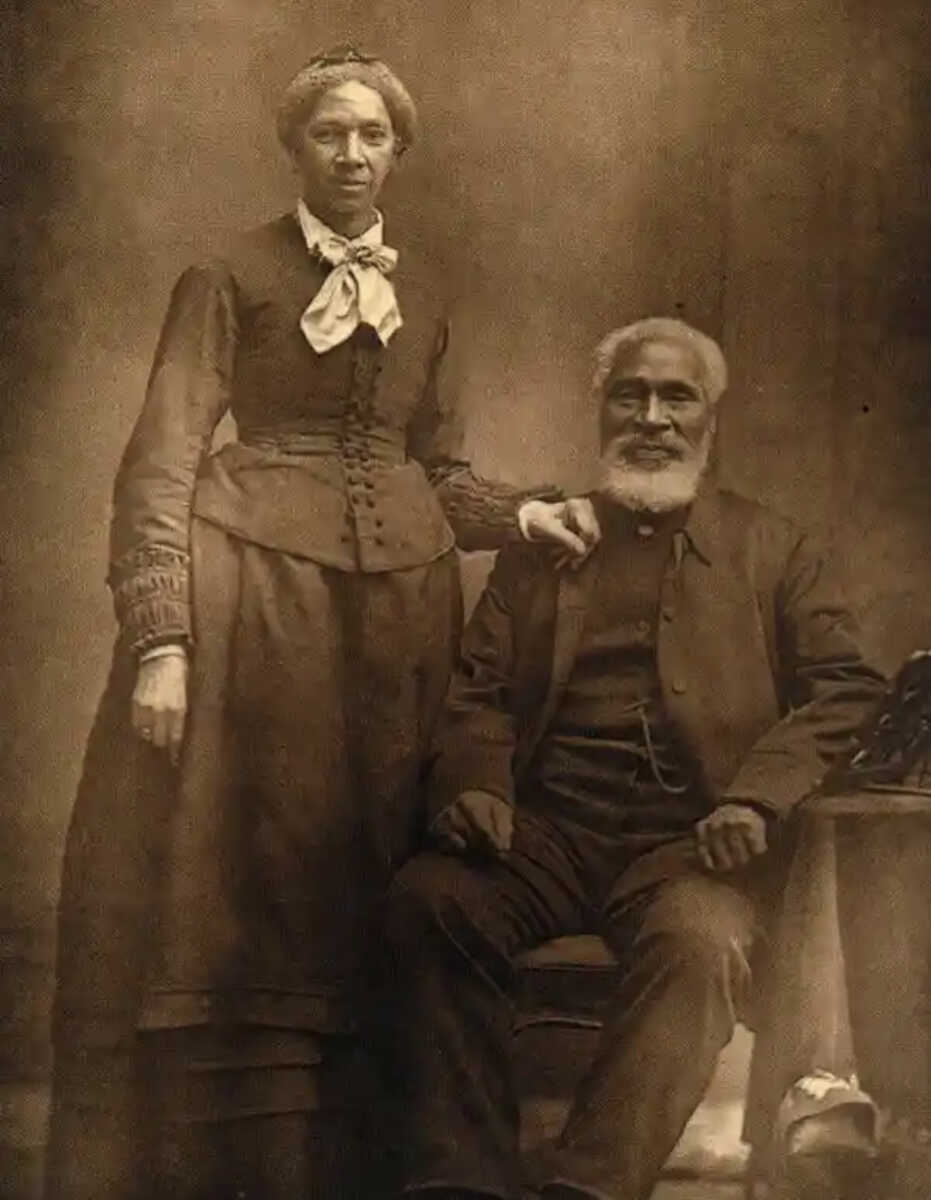
Street to be renamed Josiah Henson Parkway runs through land where Henson was enslaved; Henson led over 100 people to freedom as a conductor of the Underground Railroad.
More on Josiah Henson here.
Per Montgomery Planning:
Wheaton, MD –The Montgomery County Planning Board, part of The Maryland-National Capital Park and Planning Commission (M-NCPPC), approved a resolution during its meeting on February 24 to rename Montrose Parkway, located in North Bethesda, in honor of the Rev. Josiah Henson. The street to be renamed Josiah Henson Parkway runs through the former plantation property of Isaac Riley, where Henson was enslaved. This property is also home to the Josiah Henson Museum and Park, operated by Montgomery Parks.
Henson, a renowned international speaker and abolitionist, led 118 people from enslavement in the United States to freedom in Canada as a conductor of the Underground Railroad. His autobiography, which depicted his time enslaved on the Riley plantation until he escaped to Canada in 1830, inspired Harriet Beecher Stowe’s landmark novel, “Uncle Tom’s Cabin.” The record-breaking book fueled the abolitionist movement in the mid-nineteenth century and helped to propel the American Civil War.
“We are proud to commemorate the Rev. Josiah Henson’s contributions to end slavery with this new street name,” said Montgomery Planning Director Gwen Wright. “We hope that everyone who travels on Josiah Henson Parkway will take a moment to think about how their lives may have been different if it were not for his bravery and perseverance.”
The request to rename Montrose Parkway came from Councilmember Hans Riemer, who sent a letter to Director Wright on January 5 after working collaboratively with community leaders, including Catherine Leggett, Campaign Chair of the Henson Museum Project, the Josiah Henson Museum and Park Advisory Committee, and Warren Fleming, an early advocate of Henson’s legacy.
“It is important that we provide the Rev. Josiah Henson with the public recognition he justifiably deserves, and this new street name is a great step forward,” said Councilmember Riemer. “It will give our residents and children a symbol of the fight for freedom that Henson embodies while reminding our community of our unique history and the role of African American leaders since our founding. I am honored to help make Josiah Henson Parkway a reality in partnership with community leaders, Montgomery Planning and the Montgomery County Department of Transportation.”
M-NCPPC is the sole entity authorized under Maryland law with street addressing or renaming streets in Montgomery County, except within certain independent municipalities. The Montgomery County Planning Board has sole approval authority over street renaming, which it has delegated to the Montgomery Planning Director.
After conducting an analysis, Montgomery Planning determined that this renaming is an appropriate way to commemorate Henson as an historic figure of international significance. It will also have a minimal impact on the two properties currently with Montrose Parkway addresses and will eliminate any possible confusion with Montrose Road, also located in North Bethesda.
This renaming effort is separate from the M-NCPPC Streets and Parks Facilities Renaming Review Project, which focuses on Montgomery County-owned and maintained streets and park facilities named after Confederates or those who otherwise do not reflect Montgomery County’s values. Montgomery Planning has so far renamed three streets under that project identified as having full name matches with Confederate soldiers to honor local African American historical figures Geneva Mason and William Dove.
The Montgomery County Department of Transportation (MCDOT) and the State Highway Administration (SHA) are expected to install the new street signs for Josiah Henson Parkway in early March.

Verma’s leadership on racial equity and social justice issues recognized in appointment
Per Montgomery Planning:
WHEATON, Md. – Montgomery County Planning Board Commissioner Partap Verma was appointed Vice Chair of the Planning Board on Thursday, February 24, 2022. Planning Board Chair Casey Anderson made the announcement during the Planning Board’s meeting at the Wheaton Headquarters building.
“Partap has provided valuable guidance as a Planning Board member over the last three years and now in his role as Vice Chair, his leadership will allow us to continue to work to advance the goals of reaching community equity, environmental resilience and economic competitiveness.”
As Vice Chair of the Planning Board, Verma will assume the leadership role of the Chair in his absence, overseeing Board meetings and regulatory decisions.
“I am honored to assume the role of Vice Chair of the Planning Board,” said Verma. “We have been making progress, but we still have important work ahead of us related to welcoming underserved residents into the planning process, strengthening our economic health in the region and pursuing environmentally friendly policies. I look forward to working with our community members as we work to keep Montgomery County thriving.”
Appointed to the Planning Board by the Montgomery County Council in June 2019, Verma has made significant contributions to the Planning Board, Planning Department and Department of Parks. He has been involved with many important plans, projects and policies including the Forest Glen/Montgomery Hills Sector Plan, Silver Spring Downtown and Adjacent Communities Plan, Thrive Montgomery 2050, Corridor Forward, the update to the Growth and Infrastructure Policy, Attainable Housing Strategies, Pedestrian Master Plan and Vision Zero initiatives. Verma has supported many significant park projects and plans as well including approval the 2022 Parks, Recreation and Open Space Policy Plan, and the FY23 – 28 Capital Improvements Program. Verma has also served as Chair and member of the County Council-appointed Montgomery County Racial Equity and Social Justice Advisory Committee.
Verma is a lifelong Montgomery County resident, a product of Montgomery County Public Schools and was once a participant in the Free and Reduced-Price Meals program. Commissioner Verma, who is proud of his east county roots raised by immigrant parents, is a dad, husband and a member of the LGBTQ community residing in Forest Glen.
About Vice Chair Verma
Verma, a certified mediator, specializes in privacy law, FOIA, agile development and alternative dispute resolution. Prior to joining the Department of Homeland Security (DHS), he served as general counsel at the U.S. Department of State, specializing in interagency information sharing, national security issues and immigration law. He also worked as a consular officer in Turkey and India as well as on task forces supporting crises around the world.
Prior to his appointment to the Planning Board, Verma represented Forest Glen issues at Montgomery County’s Mid-County Citizens Advisory Board as the land use chair and served on the executive board for Sierra Club Montgomery. Additionally, he served as a mediator and panel attorney for the Montgomery County Department of Housing and Community Affairs’ Commission on Common Ownership Communities. Verma is also the founder of Friends of Forest Glen and Montgomery Hills and the blog “Finding Forest Glen.”
Verma received a law degree with honors from the Pennsylvania State University School of Law in 2005 along with certificates in transnational law from Duke University and comparative law from the University of London. In 2001, he received a Bachelor of Arts degree in political science from the University of Maryland.

Community Engagement Report highlights the initial outreach process, data, and findings for the Fairland and Briggs Chaney Master Plan.
The Montgomery County Planning Department presented the Fairland and Briggs Chaney Master Plan Community Engagement Report to the Montgomery County Planning Board at their February 3, 2022 meeting. The report offers a summary of the initial community outreach and engagement activities, preliminary findings, and next steps for the plan.
Throughout the process, planners have engaged residents, business owners and other stakeholders through a series of in-person and virtual options. Materials and listening sessions were translated into different languages to encourage equitable participation with the area’s population. To date planners have:
- Received comments from more than 700 residents in the plan area.
- Held a speaker series, call “CommUNITY Conversations in Fairland” that highlighted people-first planning Fairland and the work of neighborhood influencers.
- Hosted four listening sessions to gather information on community concerns and document individual stories.
- Partnered with Everyday Canvassing to knock on over 3,850 doors to conduct in-person interviews.
- Conducted a pedestrian audit of the plan area to highlight opportunities for the plan to make recommendations to be more friendly to walk and roll.
- Reached out via online surveys, formal and informal community meetings, mailings and other tools.
Read the Community Engagement report.
“The overall outreach and engagement strategy has been a focused on putting people first,” said Upcounty Master Planning Supervisor Don Zeigler. “The community is the backbone of this plan process, and we have been happy to have been able to speak to so many residents in the plan area.”
Next steps
Planners will continue to engage the community throughout the process. Continued efforts include focus groups, business and property owner canvassing, a pedestrian audit toolkit and a public photo contest. As the plan shifts to other phases, the Working Draft of the plan will be presented to the Planning Board sometime in Fall 2022. A public hearing for the plan will be held in late 2022 or early 2023.
If you are interested in the Fairland and Briggs Chaney Master Plan, sign up for the plan’s eletter or contact Project managers:
[email protected] or [email protected]
About the Fairland and Briggs Chaney Master Plan
The Fairland and Briggs Chaney Master Plan is an update to a portion of the 1997 Fairland Master Plan and will establish a clear vision for an equitable, just, and prosperous future for the Fairland community, mirroring the county’s long-term priorities, which include a vibrant economy, equity for all residents, and a healthy environment. The master plan boundary consists primarily of property and communities of Fairland and Briggs Chaney along the US 29 Corridor from near Paint Branch on the south to Greencastle Road on the north. The update will examine and provide policies and recommendations on existing and future land uses and zoning, housing inventory and needs, transportation systems, historic preservation opportunities, area park facilities, and the environment. This master plan will take cues from the equity framework in the update to the county’s General Plan, Thrive Montgomery 2050, which describes how places with equitable access to opportunity produce strong, successful communities. Goals of the Fairland and Briggs Chaney Master Plan include:
- Complete Community: Identify and correct past inequitable development policies to make the Fairland and Briggs Chaney communities more whole and connected by integrating centers of housing, retail, and office development with parks and open space to make 15-minute living a reality for as many people as possible.
- Resilient Economy: Promote economic development and job growth within the plan area and surrounding communities.
- Housing: Promote racial and economic diversity and equity in housing to help rectify past discriminatory housing policies in every neighborhood.
- Arts, Culture and Environment: Support arts and cultural institutions, through parks, open space and environment, recreational programming, and development, to celebrate our diversity, strengthen pride of place, and make the county more attractive and interesting.
- Corridor Growth and Connectivity: Promote and prioritize public and private investment along the Route 29 corridor and neighboring communities to leverage and attract future private investment in community facilities and redevelopment, including a safer, more comfortable network for walking, biking, and rolling that connects the corridor communities.
Featured photo by @DronifyDMV
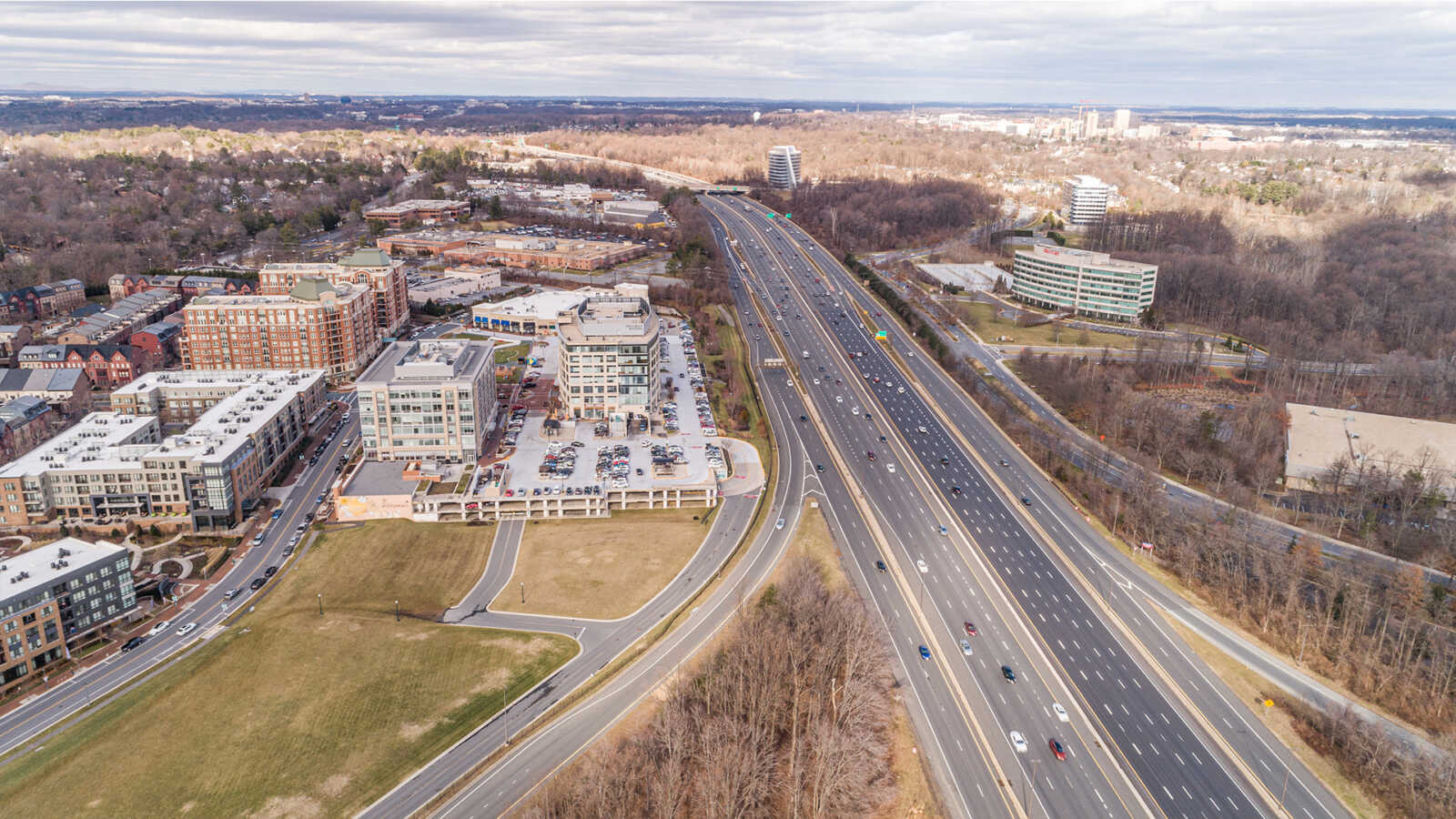
Sign up to testify at Montgomery County Council’s Public Hearings for Corridor Forward: The I-270 Transit Plan and the Silver Spring Downtown and Adjacent Communities Plan, plus more ways to get involved.
WHEATON, MD – The Montgomery County Planning Board and the Montgomery County Planning Department, both part of The Maryland-National Capital Park and Planning Commission (M-NCPPC), have announced their February 2022 calendar of meetings. The Planning Board has suspended in-person participation and attendance at meetings due to the recent increase in COVID-19 positive cases in Montgomery County until further notice.
Residents can participate in Planning Board meetings by testifying virtually and watching the meetings on the Planning Board’s live stream. Community members may sign up to testify and provide comments through Microsoft Teams or over the phone to the Board during the meeting on specific agenda items. Written testimony may be submitted in advance of the meeting. For accessibility accommodations, contact us.
There are many ways to participate in Planning Board meetings:
- Watch the Planning Board meeting live online, and on demand.
- Listen live over the phone to the Planning Board meeting by calling: 866-774-0898 Password: 24252020
- Sign up to testify via Microsoft Teams or over the phone during the Planning Board meeting. To testify, fill out the Sign Up to Testify form by 12 noon on the day before the Planning Board meeting.
- On the afternoon before the meeting, you will receive an email with a phone number to call during a designated time to provide your testimony for a specific agenda item. Submitting this form online by the deadline is the only way to testify on meeting items.
- If you have questions, send an email to [email protected] or leave a message at 301-495-4605 and a staff member in the Planning Board Chair’s office will contact you.
- Email your written testimony with comments on specific Planning Board agenda items to [email protected] by 12 noon on the day before the Planning Board meeting. Items received after this date and time will not be included in the record.
- If you are signing up to testify on a Consent Agenda Item listed on the Planning Board agenda, please note that the Chair will determine the time for a full hearing on any Consent Agenda Items at the beginning of the Planning Board Meeting, and it may be the same day or it may be a date in the future, based upon the Board’s schedule. Accordingly, please be prepared to testify on the same day and provide any written materials by 12 noon the day before the meeting.
- For ADA accommodations or to request materials in alternate formats, consult the Montgomery Planning Accessibility webpage or contact the Montgomery Planning ADA Coordinator at 301-495-1324.
For more details, review the list of events below and visit www.montgomeryplanning.org. These events are subject to change.
February 2 – The Historic Preservation Commission will hold its meeting online. To testify on an agenda item, sign up no later than 9 a.m. the day before the hearing. Consult the HPC meeting webpage for agenda information.
February 3 – The Planning Board will hold its meeting online. Consult the Planning Board’s agenda, posted 10 days before the meeting for more information. Watch the meetings online via live stream or review previous meetings on demand.
February 10 – The Planning Board will hold its meeting online. Consult the Planning Board’s agenda, posted 10 days before the meeting for more information. Watch the meetings online via live stream or review previous meetings on demand.
February 15 – The Montgomery County Council will hold a virtual Public Hearing on the Planning Board Draft of the Corridor Forward: The I-270 Transit Plan (7:30 – 9:30 p.m.). Sign up to testify. Consult the County Council’s agenda for more information. Watch the Public Hearing online via live stream.
February 16 – The Historic Preservation Commission will hold its meeting online. To testify on an agenda item, sign up no later than 9 a.m. the day before the hearing. Consult the HPC meeting webpage for agenda information.
February 17 – The Planning Board will hold its meeting online. Consult the Planning Board’s agenda, posted 10 days before the meeting for more information. Watch the meetings online via live stream or review previous meetings on demand.
The Montgomery County Council will hold a virtual Public Hearing on the Planning Board Draft of the Silver Spring Downtown and Adjacent Communities Plan (7:30 – 9:30 p.m.). Sign up to testify. Consult the County Council’s agenda for more information. Watch the Public Hearing online via live stream.
February 24 – The Planning Board will hold its meeting online. Consult the Planning Board’s agenda, posted 10 days before the meeting for more information. Watch the meetings online via live stream or review previous meetings on demand.
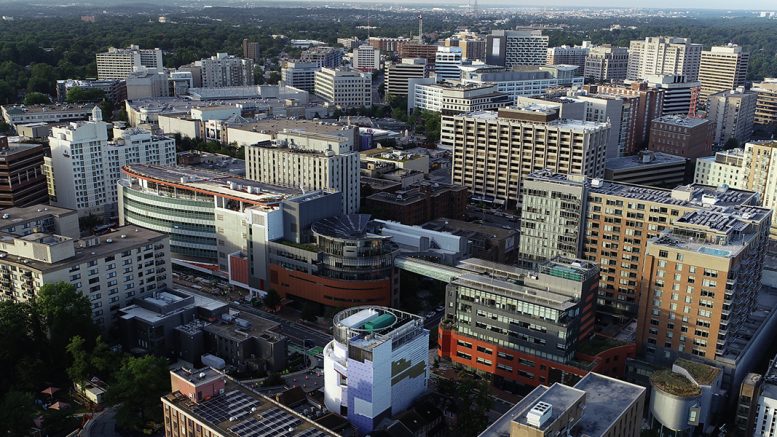
Plan recommends development of key opportunity sites, new parks, improvements to bicycle and pedestrian infrastructure, and vision for sustainable economic growth in downtown
Press release from Montgomery Planning:
Wheaton, MD – Montgomery Planning approved the Planning Board Draft of the Silver Spring Downtown and Adjacent Communities Plan during its meeting on January 6. Planners have incorporated comments from the Planning Board into the draft of the plan and will next transmit it to the Montgomery County Council for its review. The transmittal is expected to take place this week.
The approval from the Planning Board comes after a Public Hearing on December 2, 2021, followed by four work sessions held on December 9, 16 and 23, 2021 and on January 6, 2022. The Planning Board Draft, the plan’s appendices, the staff reports and resources for all four work sessions are available on montgomeryplanning.org/silverspringdowntown.
“The draft recommendations in the Silver Spring Downtown and Adjacent Communities Plan reflect the input we received from the community throughout the planning process,” said Montgomery Planning Director Gwen Wright. “We have received feedback from residents, community organizations, business and property owners, and others who are committed to a diverse and thriving future for Silver Spring. We continue to welcome the community’s participation as the draft plan moves through the Montgomery County Council.”
Some of the key recommendations in the plan include:
- Establish a Green Loop to expand and unify access for all residents to green, safe, and inviting sidewalks, bikeways, and parks and open spaces.
- Create new and enhance existing parks and open spaces, including a major renovation of Jesup Blair Park.
- Support the expansion of bioscience, technology, and education uses to increase employment opportunities in the plan area.
- Update the Zoning Code to provide more flexibility of development, increase affordable housing, support small business growth, and realize Sector Plan goals.
- Encourage the development of diverse housing types in the adjacent communities blocks as recommended by the plan and the ongoing Attainable Housing Strategies
- Establish the Connectivity and Infrastructure Fund (CIF) to allow all Commercial/Residential (CR) properties to obtain additional density if needed to meet maximum building heights. The fund would support a world-class arrival experience at the transit center, a new bridge connection across the rail tracks, and strategic utility and streetscape infrastructure improvements.
- Create a Silver Spring Building Height Incentive Zone (BHIZ) to allow properties in the commercial core of the downtown to obtain additional height up to 150 percent of the mapped maximum height for flexibility.
- Implement a Design Advisory Panel and design review for all Optional Method development projects.
- Incentivize redevelopment of key opportunity sites to realize the district-specific visions presented in the plan.
- Increase the minimum Moderately Priced Dwelling Unit (MPDU) requirement from 12.5 percent to 15 percent plan-wide.
The next steps for the Silver Spring Downtown and Adjacent Communities Plan include a Montgomery County Council Public Hearing where the community will be invited to testify. This will be followed by a series of work sessions at the Planning, Housing, and Economic Development (PHED) and Transportation and Environment (T&E) Committees and the full County Council as well as a vote on the draft plan by the County Council. The last step is adoption of the final plan by the Maryland-National Capital Park and Planning Commission.
The draft plan builds upon the success of the 2000 Silver Spring Central Business District Sector Plan to help the area continue to be a regional destination for the next 20 years while supporting sustainable growth and development in the emerging areas of the downtown and adjacent communities. It includes recommendations for land use and zoning, housing, economic growth, urban design, transportation, parks and public spaces, environmental resiliency, community facilities, and historic resources.
As the first Sector Plan to follow the passage of Montgomery County’s Racial Equity and Social Justice Act, equity is woven throughout the plan and is reflected in the four overarching themes that emerged after engaging with stakeholders. These include diversity, resiliency, connectivity, and community health.
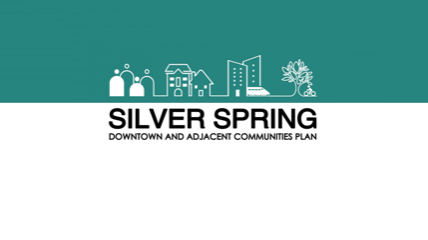
Planning Board work sessions scheduled for December 16 and 23, 2021 and January 6, 2022; the community is invited to watch via live video stream
Per Montgomery Planning:
Wheaton, MD –The Montgomery County Planning Board held its first work session for the Silver Spring Downtown and Adjacent Communities Plan on December 9, 2021. Planning Board members worked with Montgomery Planning staff to review the plan for its first of four scheduled work sessions. This follows the Planning Board’s Public Hearing on December 2, 2021, during which community members testified in person and virtually on the plan.
During the first work session, the Planning Board reviewed key plan recommendations related to parks and public spaces, historic resources, environmental resiliency, and schools. The Board also reviewed language in the plan that addresses compliance with Montgomery County’s Racial Equity and Social Justice Act. Equity is woven throughout the plan and is reflected in the four overarching themes that emerged after engaging with stakeholders: diversity, resiliency, connectivity, and community health.
“The Silver Spring Downtown and Adjacent Communities Plan is the first Sector Plan to follow the passage of Montgomery County’s Racial Equity and Social Justice Act,” said Montgomery Planning Director Gwen Wright. “We took care to understand the historic advantages and disadvantages that have impacted Silver Spring stakeholders and we have proposed recommendations that encourage more equitable access to investment and civic resources.”
Read the Public Hearing Draft.
Watch the History of Silver Spring – Montgomery Planning Board briefing.
The Silver Spring Downtown and Adjacent Communities Plan builds upon the success of the 2000 Silver Spring Central Business District Sector Plan to help the area continue to be a regional destination for the next 20 years while supporting sustainable growth and development in the emerging areas of the downtown and adjacent communities. The plan’s Public Hearing Draft includes recommendations for land use and zoning, housing, economic growth, urban design, transportation, parks and public spaces, environmental resiliency, community facilities, and historic resources.
The Board will observe the following work session schedule during its Planning Board meetings. Please note that these topics are subject to change and additional topics may be brought up during these work sessions as time may allow:
December 16, 2021
- Urban Design
- Transportation
- Economic Growth
- Land Use and Zoning
- Implementation
December 23, 2021
- Housing
- Review edits from 12/9 work session
January 6, 2022
- Review all edits
- Review any additional key text changes
- Vote out to transmit Planning Board Draft Plan to Montgomery County Council
Watch the recording of the Planning Board’s Public Hearing.
View the explainer.
Community members can watch the work sessions online via live stream on the Planning Board’s website. The community is invited to submit written comments to the Planning Board via email at [email protected], although these comments will not be included in the public record for the Public Hearing Draft, which is now closed. There will be another opportunity for community members to testify publicly after the Planning Board Draft of the plan is transmitted to the Montgomery County Council.
To stay up to date on the progress of this plan, sign up for our eLetter. You can also reach out directly to the project team with any questions or comments about the plan:
Atara Margolies, lead planner
301-495-4558
[email protected]
About the Downtown Silver Spring and Adjacent Communities Plan
The 2000 Silver Spring Central Business District Sector Plan established a planning framework for downtown Silver Spring that envisioned a green, transit-oriented and pedestrian-friendly downtown with a strong commercial and residential development market. In the 20 years since the adoption of the downtown Silver Spring Sector Plan, the area has transformed from an area in decline to a vibrant destination for offices, retail, restaurants, and entertainment that is defined by its unique diversity. Montgomery Planning is updating the downtown Silver Spring Sector Plan to guide Silver Spring’s future growth.
Through the Silver Spring Downtown and Adjacent Communities Plan process, Montgomery Planning will analyze and reevaluate all aspects of the existing plan, consider the recommended changes implemented from the last plan, and assess future needs – all informed by community conversation and input. View the plan’s Scope of Work that the Planning Board approved in June 2020.
About the Equity Agenda for Planning
Montgomery Planning recognizes and acknowledges the role that our plans and policies have played in creating and perpetuating racial inequity in Montgomery County. We are committed to transforming the way we work as we seek to address, mitigate, and eliminate inequities from the past and develop planning solutions to create equitable communities in the future. While it will take time to fully develop a new methodology for equity in the planning process, we cannot delay applying an equity lens to our work. Efforts to date include:
- Developing an Equity Agenda for Planning. The Planning Board approved Equity in Master Planning Framework, and staff is working on action items.
- Prioritizing equity in Thrive Montgomery 2050. Community Equity is one of the three priority areas of our county General Plan update, Thrive Montgomery 2050.
- Focusing on equity in upcoming plans. Equity is a central focus of the Silver Spring Downtown and Adjacent Communities Plan, the first master plan to launch since Montgomery County’s Racial Equity & Social Justice Act passed. All upcoming plans and studies will have an equity focus.
- Created an Equity Focus Areas mapping tool and developing a Community Equity Index. Equity Focus Areas in Montgomery County have high concentrations of lower-income people of color, who may also speak English less than very well. Montgomery Planning developed this data-driven tool to identify and map these areas to assess potential racial and social inequities and produce master plans that will foster more equitable outcomes for communities in Montgomery County. The Community Equity Index will expand on the previous Equity Focus Area analysis, creating a more robust, diagnostic tool providing additional detail of critically selected neighborhood characteristics relevant for equity analysis countywide.
- Viewing management and operations through an equity lens. Our efforts are not limited to the master planning process. Management and operational functions like communications and human resources are developing approaches, tools, plans, and training to ensure that we look at everything through an equity lens.

Members of the public provided testimony on the draft plan at the December 9 hearing
Per Montgomery Planning:
WHEATON, MD – The Montgomery County Planning Board held a public hearing for Corridor Forward: The I‑270 Transit Plan on December 9. The draft plan proposes a near-term transit network of dedicated bus lanes known as the Corridor Connectors that build on existing master planned projects, including the MD 355 and Veirs Mill Road Bus Rapid Transit (BRT) projects, to serve communities and employment centers along the I‑270 corridor. Additionally, Corridor Forward includes an ambitious long-term recommendation for an extension of Metrorail’s Red Line to further expand transit options along the I‑270 corridor. This Draft Plan re-envisions the master planned Corridor Cities Transitway (CCT) as the Corridor Connectors, a network of more buildable dedicated bus lanes which connect I‑270 corridor communities to the county’s existing and planned rapid transit network.
Read the draft of the plan and view its recommendations on an interactive map.
Watch the public hearing on demand.
Beyond the proposed network, Corridor Forward offers additional recommendations that support the proposed transit network and strengthen the potential to advance regional transit connectivity.
The Public Hearing Draft is the result of an iterative planning process, in which Planning staff:
- Compared transit vehicle attributes and inventoried transit options that could serve the I‑270 Corridor.
- Completed a pre-screening analysis, which evaluated the initial list of inventoried transit options based on indicators such as travel time, population access, job access, ability to accommodate growth and equitable access and advanced six transit options for detailed analysis.
- Refined and analyzed the six transit options, including an evaluation of strategic metrics, economic and financial outlook, and potential implementation challenges and risks.
- Completed additional evaluation on combinations of the six transit options to inform the development of the Plan’s recommendations.
The Draft Plan is a product of more than two years of transportation analysis, stakeholder coordination and community outreach.
Updated Corridor Forward Plan Schedule
The community will have the opportunity to continue to provide comment and testimony through the Planning Board process.
- December 16 – Planning Board work session #1
- December 23 – Planning Board work session #2
About the Corridor Forward Plan
The goal of Corridor Forward is to comprehensively evaluate, prioritize and advance transit options in the I‑270 corridor area that achieve the best combination of the following values, consistent with the Planning Board Draft of Thrive Montgomery 2050:
- Strategic Connections: Serve high-demand origin and destination pairs, balancing costs of implementation with projected benefits.
- Economic Health: Enable existing development and master-planned communities to realize their potential as livable and economically vibrant places.
- Community Equity: Align with the county’s social equity goals and principles.
- Environmental Resilience: Operate sustainably and reduce negative environmental impacts.
To create the plan, Montgomery Planning has worked with state and county agencies, neighboring jurisdictions, county municipalities, advocacy groups, and community members as we analyzed and prioritized transit options to develop the Public Hearing Draft. Montgomery Planning has engaged community members about their needs and values related to transit through the Corridor Forward Plan’s Transit Values Questionnaire and Transit Stories campaign.
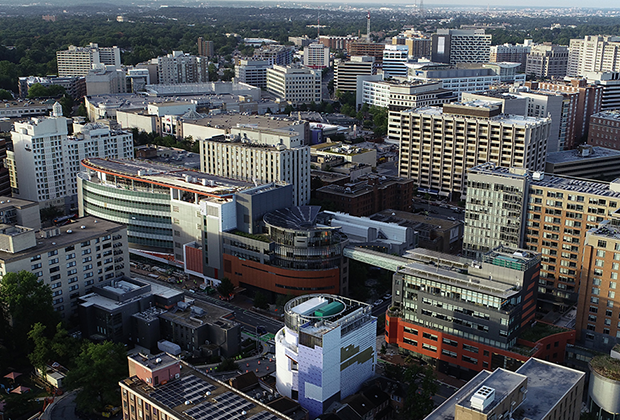
Community members testified in person or virtually during Public Hearing; four work sessions scheduled in December and January.
Wheaton, MD –The Montgomery County Planning Board, part of The Maryland-National Capital Park and Planning Commission (M-NCPPC), held a Public Hearing for the Silver Spring Downtown and Adjacent Communities Plan on December 2, 2021. This plan builds upon the success of the 2000 Silver Spring Central Business District Sector Plan to help the area continue to be a regional destination for the next 20 years while supporting sustainable growth and development in the emerging areas of the downtown and adjacent communities. Community members testified in person or virtually during the Planning Board’s Public Hearing. Some community members provided their comments in writing ahead of the Public Hearing for the Board’s consideration.
Watch the recording of the Planning Board’s Silver Spring Downtown and Adjacent Communities Public Hearing.
The plan’s Public Hearing Draft includes recommendations for land use and zoning, housing, economic growth, urban design, transportation, parks and public spaces, environmental resiliency, community facilities, and historic resources. As the first Sector Plan to follow the passage of Montgomery County’s Racial Equity and Social Justice Act, equity is woven throughout the plan and the four overarching themes that emerged after engaging with stakeholders:
- Diversity
- Resiliency
- Connectivity
- Community Health
“We are pleased that so many community members have taken the time to provide feedback on what they want Silver Spring to look like over the next 20 years, not just during the Public Hearing, but throughout the planning process,” said Planning Director Gwen Wright. “The plan’s recommendations address topics we heard about most from the community, such as strengthening the area’s diverse mix of stores, restaurants, and entertainment, as well as enhancing pedestrian and bicycle networks.”
Since kicking off the plan in July 2020, Planning staff have received input from residents, community organizations, property owners, civic associations, condo boards, employers, business owners, students at Montgomery College, and county agency partners. Over 150 community members participated in a series of online workshops during the plan’s Visioning Phase and staff received over 500 comments on the ReactMap, an online mapping tool where community members could submit comments anywhere within the plan area.
The Planning team created an explainer to help community members quickly understand the plan’s goals and draft recommendations ahead of the Public Hearing. This explainer is available in English, Spanish, and Amharic.
The Planning Board will hold work sessions on the Silver Spring Downtown and Adjacent Communities Plan during its meetings on December 9, 16, and 23 and on January 6, 2022. Community members can watch the work sessions online via live stream on the Planning Board’s website. The community is invited to submit written comments to the Planning Board via email at [email protected]. Comments received by 6 p.m. on December 7, 2021 will be included as part of the public record.
To stay up to date on the progress of this plan, sign up for our eLetter. You can also reach out directly to the project team with any questions or comments about the plan:
Atara Margolies, lead planner
301-495-4558
[email protected]
About the Downtown Silver Spring and Adjacent Communities Plan
The 2000 Silver Spring Central Business District Sector Plan established a planning framework for downtown Silver Spring that envisioned a green, transit-oriented and pedestrian-friendly downtown with a strong commercial and residential development market. In the 20 years since the adoption of the downtown Silver Spring Sector Plan, the area has transformed from an area in decline to a vibrant destination for offices, retail, restaurants, and entertainment that is defined by its unique diversity. Montgomery Planning is updating the downtown Silver Spring Sector Plan to guide Silver Spring’s future growth.
Through the Silver Spring Downtown and Adjacent Communities Plan process, Montgomery Planning will analyze and reevaluate all aspects of the existing plan, consider the recommended changes implemented from the last plan, and assess future needs – all informed by community conversation and input. View the plan’s Scope of Work that the Planning Board approved in June 2020.

Initiative considers ideas that would strengthen Montgomery County’s Forest Conservation Law and support new forest conservation programs.
Per Montgomery Planning:
WHEATON, MD – Montgomery Planning has launched the No Net Loss of Forest Initiative. Over the next several months, stakeholders are considering ideas to achieve a more balanced approach to forest conservation across Montgomery County, including potential amendments to the County’s Forest Conservation Law, policy changes, and additions to its forest conservation programs such as Reforest Montgomery.
Once recommendations for amendments or other legislation are finalized, they will go through a series of internal and external reviews, including a review by the Maryland Department of Natural Resources, before being introduced to the Montgomery County Planning Board. Staff anticipates that a Planning Board discussion on this topic will occur in early spring of 2022, which will be followed by a public comment period and public hearing.
The Planning Department’s Forest Conservation staff are holding two virtual listening sessions in December that the public is invited to attend:
- December 1 from 4 p.m. to 5:30 p.m.
- December 9 from 2 p.m. to 3:30 p.m.
Before each session, it is recommended that you watch the staff presentation about the initiative.
Forest Conservation in Montgomery County
Since 1993, projects subject to the Montgomery County Forest Conservation Lawhave focused primarily on protection of pre-existing forest (both on-site and off-site) to meet requirements, resulting in permanent protection for more than 12,500 acres of forest in Montgomery County. Additionally, the law has resulted in planting of more than 2,500 acres of new forest in the county, which are also permanently protected. These planting and protection efforts intend to mitigate for the clearing of over 4,000 acres of forest by projects subject to the county law.
Montgomery Planning is proud that the Forest Conservation Law has resulted in planting and protection of more than 15,000 acres of quality forest in the county, roughly 16% of the county’s forest. The goal of this new initiative is to bring the acreage of forest planted and acreage of forest cleared closer together for the county as a whole, while retaining the option to protect pre-existing forest that has been successful to date.
To learn more about the Montgomery County Forest Conservation Law, see our FAQs.
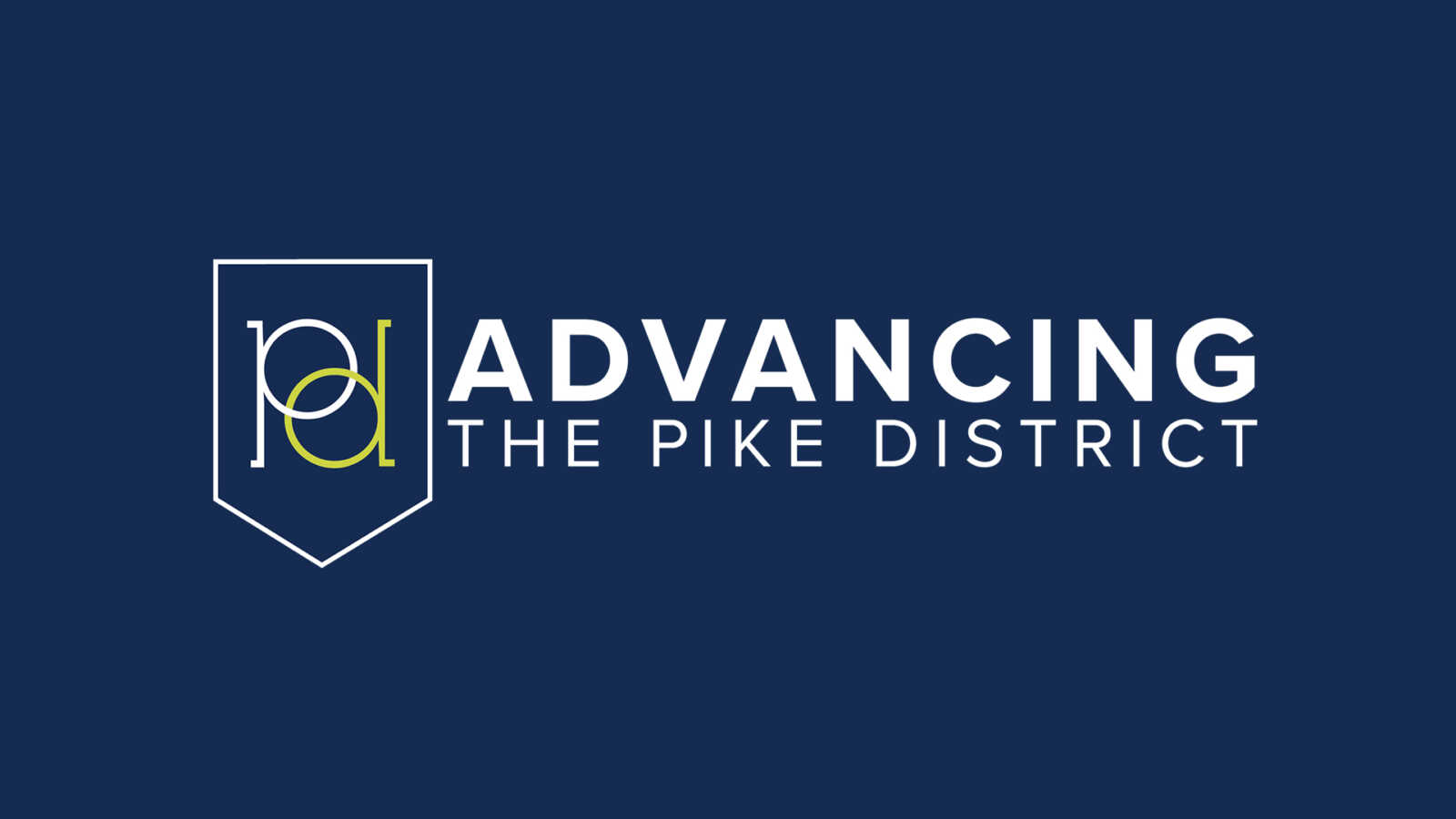
Recommendations will be used for the design of all public and private streets in this area of White Flint
Montgomery Planning has released the Pike District Streetscape Guidelines as a part of the Advancing the Pike District project. The recommendations in the document will be used to guide the transformation within the White Flint Special Taxing District by providing recommendations for the design of all public and private streets. The guidelines are based on an existing conditions analysis, stakeholder feedback and current best practices for creating safe and attractive streets with multimodal connectivity.
Read the Pike District Streetscape Guidelines. Watch the briefing to the Planning Board on November 18, 2021.
The Pike District Streetscape Guidelines were drafted to ensure that streets in the Pike District are developed in a manner that adequately accommodates all modes and users–pedestrians, cyclists, public transit, and motorists–in a safe and attractive environment. Streetscape guidelines help provide information about how the various components of streets such as travel lanes, sidewalks, street trees, bicycle and transit facilities should be organized. They provide overall guidance as well as context-based recommendations for specific streets.
About Advancing the Pike District
Advancing the Pike District is a Montgomery Planning initiative to accelerate the transformation of White Flint’s core into a walkable, mixed-use district by identifying short- and medium-term implementation-focused solutions that build on the Sector Plan’s recommendations, enhance mobility, and promote economic development, urban design and placemaking. The project revisits and builds upon the recommendations from the 2010 White Flint Sector Plan, which has guided infrastructure improvements and development in the White Flint area over the past decade, with the goal of accelerating White Flint’s transformation.
View the Advancing the Pike District Development Trends, Infrastructure Update and Short-Term Solutions report and learn more about the Pike District Connector. Sign up for the project’s eletter to stay informed.

